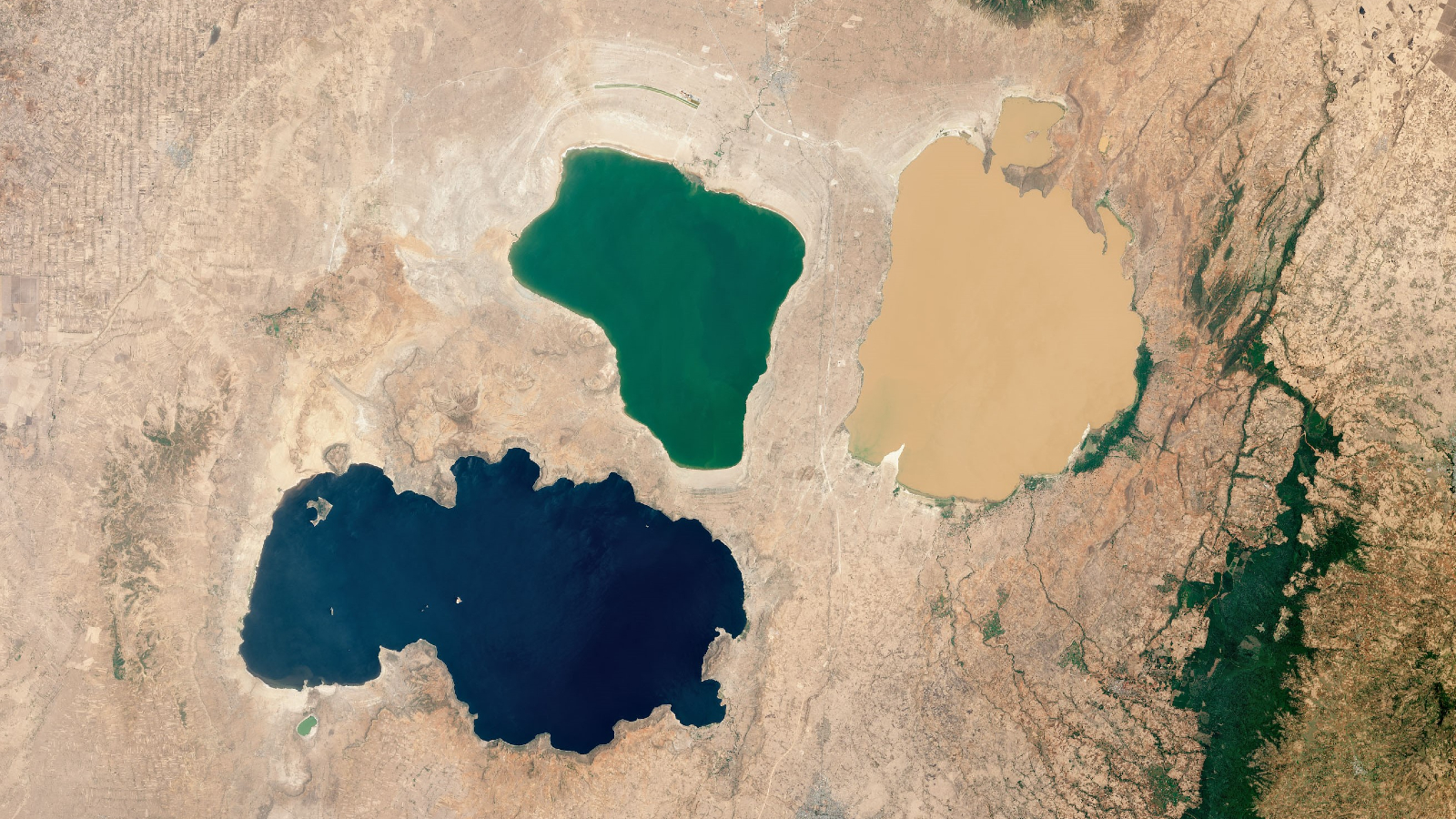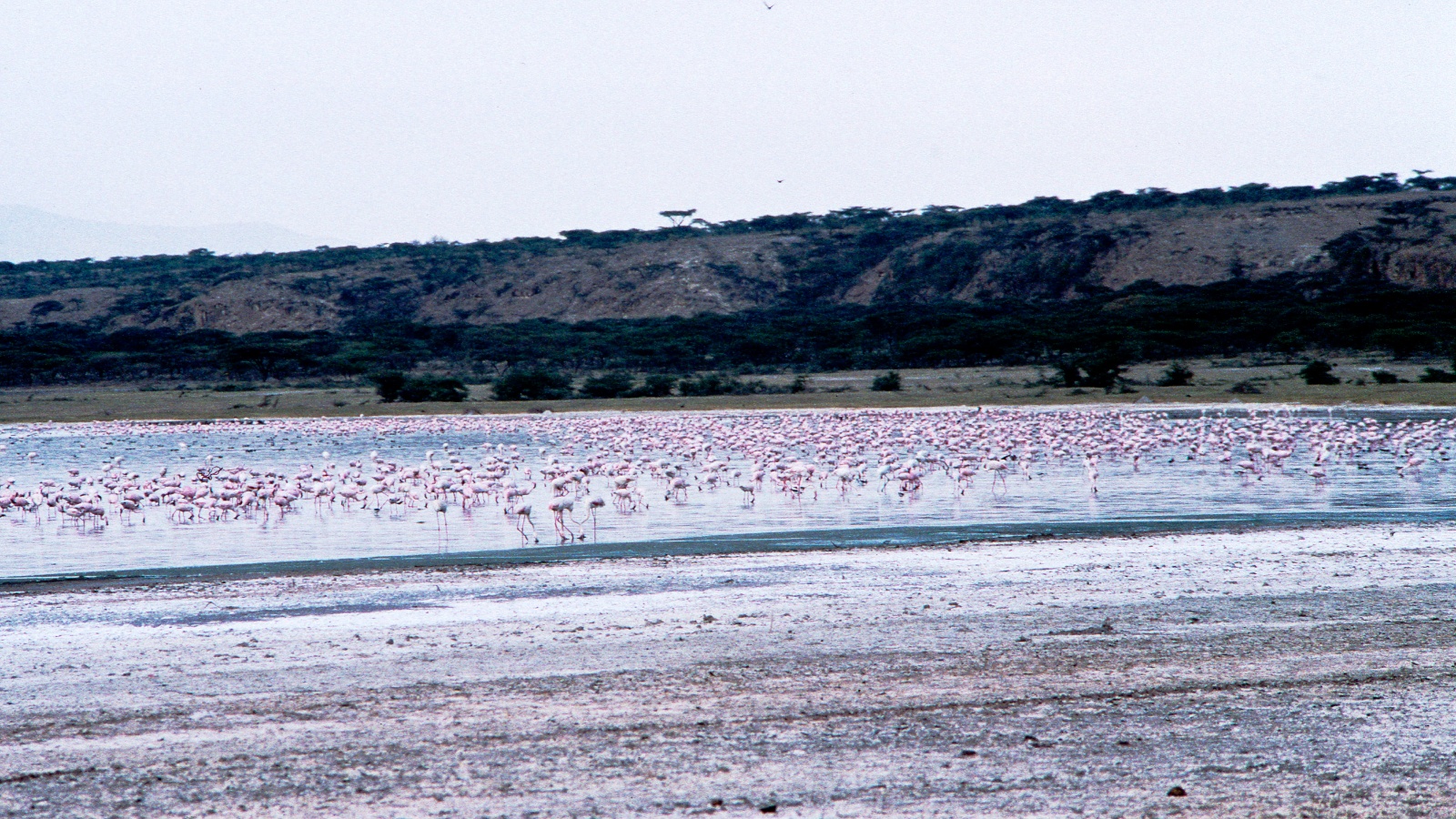
Where is it? Great Rift Valley, Ethiopia [7.518881, 38.650099].
What's in the photo? From left to right: Lake Shala, Lake Abijatta and Lake Langano.
Which satellite took the photo? Landsat 8.
When was it taken? March 29, 2022.
The trio of lakes in this striking image each have a different color thanks to a combination of factors including depth, water chemistry and inhabiting wildlife. This is very strange, not only because of the lakes' proximity but because in the not-too-distant past (geologically speaking), they were once part of the same ancient lake, according to NASA's Earth Observatory.
The three lakes are Lake Shala, which has a deep-blue hue; Lake Abijata, which is green; and Lake Langano, which has a sandy-yellow hue similar to the surrounding landscape. The trio is located in Ethiopia's Great Rift Valley, around 125 miles (200 kilometers) south of the country's capital, Addis Ababa.
Related: 12 amazing images of Earth from space
Lake Shala is around 7.5 miles (12 km) long and 17 miles (28 km) across at its widest point. It is the deepest of the three lakes, with a maximum depth of 873 feet (266 meters), which is why its waters appear dark blue from above. It is a soda lake, meaning it is highly alkaline (has a very high pH). Despite the extreme conditions, the lake contains a large number of small crustaceans and microorganisms that support large flocks of visiting flamingos and pelicans.

Lake Abijata, which is around 11 miles (17 km) long and 9 miles (15 km) wide, is the shallowest of the three lakes, with a maximum depth of 46 feet (14 m). As a result, it is highly variable and has lost around one-third of its area over the last 50 years. The lake's green color is most likely due to a bloom of phytoplankton on its surface, which also attracts a large number of birds.
Lake Langano is around 11 miles (18 km) long and 10 miles (16 km) across. It is fed mostly by streams to the east, which dump brown sediment from nearby mountains into the water — giving it its yellow color. Langano is a popular destination for beachgoers because it is the only lake in the area not inhabited by parasitic worms that can transmit a potentially fatal disease known as schistosomiasis.
However, until around 10,000 years ago, the three lakes were part of a single massive body of water, named Lake Galla, which disappeared after changing rainfall patterns and tectonic motion altered the surrounding landscape.







